Three considerations for right-sized tankless installations–and increased customer satisfaction Propane tankless water heaters use less energy, cost less to operate, and produce fewer emissions than other options, which is why a growing number of homeowners are requesting these systems. As contractors know, determining the right configuration for their projects isn’t always straightforward. Whether considering a Read more
propane
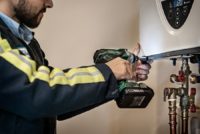
Three considerations for right-sized tankless installations–and increased customer satisfaction
Propane tankless water heaters use less energy, cost less to operate, and produce fewer emissions than other options, which is why a growing number of homeowners are requesting these systems.
As contractors know, determining the right configuration for their projects isn’t always straightforward. Whether considering a single unit for the whole home or multiples that run in tandem, knowing how to predict demand is key to giving customers a setup that meets their performance and cost expectations.
Here are three factors to consider when right-sizing a tankless system for projects.
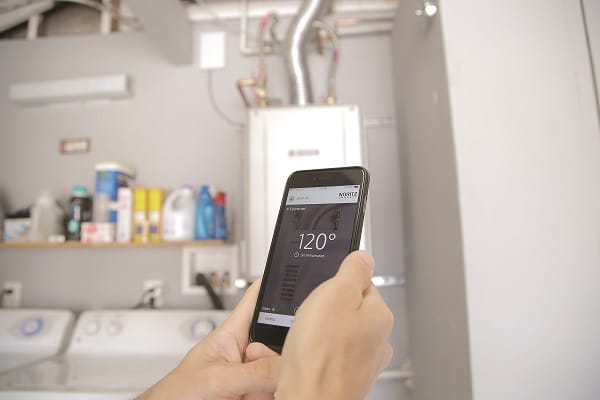
How much water will the customer need?
Knowing how many people will live in the home, who will be using hot water, and for what purposes is the first step toward installing a system that will fulfill their specific needs. Additionally, understanding a customer’s lifestyle and habits–when they shower, how often they do laundry, and whether they expect to install radiant heating–can help determine expected peak demand times.
Take stock of the number and type of appliances and systems requiring hot water and note their water delivery rates. To calculate peak demand, the Department of Energy (DOE) recommends counting the number and gallons per minute (GPM) rate of faucets, showers, and appliances that could be in use in the home at any given time. Features such as in-floor radiant heating and spas can considerably raise a home’s hot water demands. Propane tankless water heaters provide an endless supply of hot water, averaging roughly 222 gallons per hour, compared with an average first-hour delivery rating of just 62 gallons per hour for electric storage tank models.
How much will the water need to be heated?
It’s important for contractors and installers to know the difference between outdoor ground temperatures and the desired indoor hot water temperature. That will reveal how much the water will need to heat and, therefore, how quickly the unit can deliver hot water.
For example, a typical shower head delivers 2.5 GPM, so a 9.4 GPM unit would run three to four showers depending on the inlet ground water temperature. According to the DOE, the average groundwater temperature across the U.S. is 50 degrees. In most cases, water should be heated to at least 120 degrees, so the home will need a tankless unit that can heat 2.5 GPM by 70 degrees. Lower flows can be heated to a bigger temperature rise and higher flows to a smaller temperature rise. Most propane or natural gas tankless water heaters on the market can handle a rate of 5 GPM at a 70-degree temperature rise. As fixtures are added, demand on the system increases and that 5 GPM rating can quickly get overwhelmed.
While a tankless unit will provide hot water almost instantly at the unit, the water still has to travel to the faucet, so location of the units is an important part of system design. Oftentimes, two smaller units, each placed closer to the end use site, can provide the project a higher level of satisfaction than one large or two smaller units installed in a single location. This also provides some redundancy if a unit or fixture needs to be serviced.
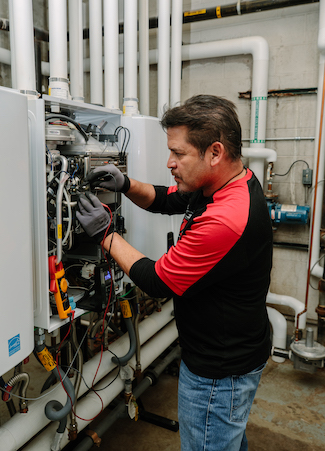
What can the home accommodate?
Peak demand scenarios are why contractors shouldn’t assume an undersized system will cover their client’s full range of needs. Oversizing isn’t as big of a concern with tankless systems. While oversizing a traditional tank water heater would result in significant wasted energy over the life of the unit, tankless units vary their flow rates based on demand and, therefore, having excess capacity doesn’t necessarily mean a tankless system is using more energy.
New projects can more easily accommodate tankless units at the point of use than existing homes, which are often designed for a central tank system–and may be better suited for one or more units installed in the basement. For most projects, one unit is sufficient. Multiple units may be used to handle larger loads or as homeowners scale up in the future as their hot water needs change. Because of the popularity and dependability of propane tankless water heaters, new products are available on the market that would allow customers to have “multiple” heaters in a single cabinet, or on a single rack that comes to the project ready for installation making system design easier still.
To determine the optimal number of tankless units for a home, help customers understand their consumption habits and how the system can be sized to meet their expectations. Determine peak demand and gauge actual usage and lifestyle habits. Then, compare prices for systems that meet those needs relative to a client’s budget. Put in as much capacity as those factors will allow to balance cost and comfort. By simply installing a propane system, customers will see optimal cost savings. That’s because propane tankless water heaters offer reduced energy costs, a lower total cost of ownership, and a longer service life compared with other options. Notably, propane tankless systems can reduce energy costs by up to 50 percent and eliminate standby energy loss from the tank.
To learn more about propane water heating systems, visit Propane.com/Water-Heating.
 Bryan Cordill the director of residential and commercial business development for the Propane Education & Research Council. He can be reached at bryan.cordill@propane.com.
Bryan Cordill the director of residential and commercial business development for the Propane Education & Research Council. He can be reached at bryan.cordill@propane.com.

Campground earns recognition for its electric to propane water heater conversion The Propane Education & Research Council (PERC) announced the Boston/Cape Cod KOA Campground as 2020’s Commercial Propane Project of the Year, an annual contest that recognizes the best residential and commercial projects being powered by propane. The campground is a popular tourist destination for people visiting Read more
Campground earns recognition for its electric to propane water heater conversion
The Propane Education & Research Council (PERC) announced the Boston/Cape Cod KOA Campground as 2020’s Commercial Propane Project of the Year, an annual contest that recognizes the best residential and commercial projects being powered by propane.
The campground is a popular tourist destination for people visiting Boston, Cape Cod, and Southeast Massachusetts. Like any hospitality business, guest experience is extremely important and was a driving factor in their decision to switch from electric to propane for water heating.
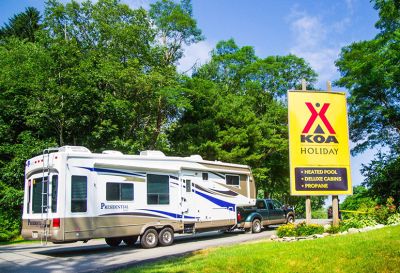
After fielding customer complaints about minimal hot water use and long wait times, the KOA Campground started converting water heaters to propane tankless systems several years ago, but their budget only allowed them to convert two water heaters per year.
Fortunately, with the help of JaySan Gas Service operations manager Evan Pittsley, the campground was able to expedite converting all the water heaters to propane, for a total of 18 cabins running on propane, improving overall customer experience. Pittsley negotiated appliance and material pricing with vendors, secured incentives from the Propane Gas Association of New England (PGANE), and arranged rebates from tankless manufacturer, Rinnai, to help fund this project.
“The switch from electric water heating to propane instantaneous water heaters seems to be the perfect fit for this campground,” said contest judge Matt Evans, building systems analyst and certified HERS rater at Newport Ventures. “This eliminated the wait time for campers who want to camp and not wait for a warm shower. As an avid camper myself who rents cabins like these, I can attest to the benefits of propane tankless vs electric water heating firsthand.”
“What impressed me most about the project was the propane supplier’s ability to go above and beyond in finding a solution to provide the entire campground with propane hot water heaters,” contest judge Brian Brooks, manager at Brooks Gas, added. “It highlights the personal relationship our industry has with both their customers and suppliers — relationships that other energy providers simply don’t have.”
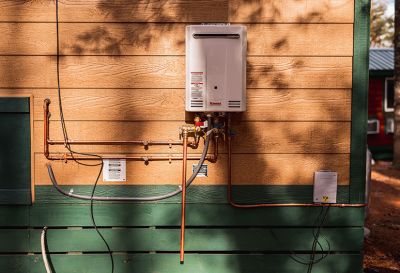
In addition to the tankless units in the cabins, the campground utilizes propane in a pump station that fills portable cylinders and RVs and in a laundry building with propane-powered commercial dryers.
“Propane tankless systems offer considerable advantages over electric water heating options, and we were thrilled this conversion could help enhance their overall guest experience,” said Bryan Cordill, PERC director of residential and commercial business development.
For those interested in learning more about PERC’s annual Propane Project of the Year contest, visit Propane.com/Project-of-the-Year.
To learn more about commercial propane applications, visit Propane.com/Commercial-Buildings-and-Construction.
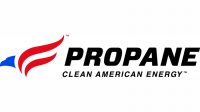
PERC revamps website to showcase the versatility of propane The Propane Education & Research Council recently relaunched its website, propane.com, which was redesigned from the ground up to help users find even more information about all the things propane can do in a user-friendly format. All of the great resources that builders were used to Read more
PERC revamps website to showcase the versatility of propane
The Propane Education & Research Council recently relaunched its website, propane.com, which was redesigned from the ground up to help users find even more information about all the things propane can do in a user-friendly format. All of the great resources that builders were used to finding on PERC’s previous site, BuildWithPropane.com, is located on the new site, too.
“We took everything that construction professionals told us they loved about our old site and incorporated it into the new propane.com,” said Jesse Marcus, PERC director of residential and commercial business development. “The site is filled with content to educate residential and commercial construction professionals how to stand out from the competition, enhance their reputation, improve their projects’ carbon footprint, and much more.”
Construction professionals can find videos, case studies, emissions data, and fact sheets showcasing the propane-powered technologies and applications available, along with their advantages.
To learn more about propane-powered technologies, or to access online resources available from PERC, visit propane.com.
